Bionetics and Biofield Assessments
Understanding the method of psychometrics as it compares to modern “scanning” technology.
Is there a way to utilize in vivo physiological stress evaluations and conclude their relationship with a state of wellness by understanding General Adaptation Syndrome's functions, as Dr. Hans Selye discovered?
Yes, but the key is mapping psychophysiological Stress Response Mechanisms.
Similar Classifications:
- Biofeedback Stress Response Bioenergetics EDA Psychogenic Immune System Reactivity Resilience
- Neuro Sensory Mechanisms—Biofield—Amygdala Perception NSMBP, EDA
- AI Digital Tensor Fields
- V-SIM is where the body/mind and perception all meet
How does psychophysiology relate to wellness?
The fact that physiology is wellness (when functioning correctly) is a key to keeping metabolic, hormone, and regulatory processes in balance. The psycho portion (psyche) is now implicated as a controller of health processes, as governed by the individual's mind/emotions/beliefs. (see Germanic Healing Knowledge - GHK)
To better understand the driving forces behind wellness, we must change our model of disease. It has been disproven that we can die from germs as the causative agent—contagions or vector illnesses spread differently than we have been taught. (see GHK) However, stress and trauma play a significant part beyond what we also have been told:
Many diseases are not actually so much the direct result of some internal agent (an infection or intoxication) as they are the consequence of the body’s inability to meet those agents with adequate adaptive reactions… (from The Stress of Life by Dr. Hans Seyle, Ph.D., p. 83)
But Dr. Ryke G. Hamer fully explains the deepest science of health, relating to the roles of germs and the microbiome, in Germanic Healing Knowledge (GHK).
What is stress doing to our bodies concerning well-being?
Stress is a component or trigger of states of unwellness: trauma, death in the family, divorce, etc., all have a marked impact on the individual (see Holmes Rahe Survey). Dr Hans Seyle’s research demonstrated that over time, under long-term stressful states, the body can just get “sick.” He also states that stress makes an indelible mark on the body and causes aspects of aging.
Modern computers and the AI age of “energy assessments.”
There are several ways tech companies can “assess” the human body. The most common aspect of bioresonance is inducing a “frequency into the body” and measuring what “frequency comes out.” This is problematic because after several frequencies are introduced, the body reacts and can get sick. Frequency scanning is itself a stressor. Also, there has to be some kind of assessment of what a normal vs not-normal frequency is to understand what is subsequently emitted. An additional weakness of bioresonance comes from the fact that the more frequencies you induce into the body, the greater resistance the body creates; so even if the algorithm is non-linear, the addition of more frequencies adds to the burden on the body, resulting in reactions which are less “normal” and more indicative of the stress resistance and depletion responses. AI now offers a way to take these thousands of bits of data and portion them into small digital boxes, like the back end of the post office sorting mail. Because it can be done quickly, mathematics affords a faster way to sort, so there isn’t any true reaction—it becomes more virtual.
What is psychophysiology to bioresonance?
Psychophysiology incorporates the inner nature of the body/mind’s biological sensing system. It is related to how the body, as a whole and specifically, relates to stressful information. Psychophysiology follows known physiological reactions and offers more than just the hierarchical list to which bioresonance is limited. Psychophysiology response (PPR) is the whole “enchilada,” so to speak—it looks at reaction time, reaction levels, response intensity, and response speed.
Bioresonance is merely a harmonic resonance and/or dissonance demonstrated in living and nonliving systems (music, sound, and organisms, and the “in tune” vs “out of tune” concept). But how do we know that it is not a necessary adaptive response due to something we didn’t know was going on in the first place? Relying solely on bioresonance can be limiting.
Limits in measuring—Bioresonance vs PPR
Additionally, if there is harmonic accordance or dissonance, the depth of that assessment may not be fully developed from a measurement point of view unless there are specific parameters that serve as guideposts in the navigation of the territory in which the “feedback” is also comprehensive enough (as in spectral data) to observe a wide range of related frequencies. As has been stated, “[the] map is not the territory” (Alfred Korzybski); similarly, bioresonance is a simple frequency and limits the actual scope of the complete picture—it is like a map of only a small portion of the complete territory. Spectral data provides a picture of the whole spectrum and allows for the incorporation of a wider assessment. Using bioresonance as a method to determine complex states of physiology pushes the limits of the nature of the “thing” itself and applies complexity to the measuring systems used. Concluding those assessments does not effectively demonstrate the nature of the organism's natural stress response.
In addition, considering “tuned and untuned” as health parameters is highly naive and limiting. However, it is highly promoted in non-scientific circles by, for example, equating bioresonance to idealism or positivism. Yes, mental attitude is essential, but that isn’t how to avoid “illness” or symptoms as a general well-being method for remaining illness-free.
PPR (PsychoPhysiologyResponse)
Psychophysiology is the interpretive organism of the body, including the psyche, the amygdala, and perceptive awareness of the nervous system. The nature of the deep links with limbic and amygdala interactions includes connections with the stress response mechanisms evoked during a stressful event. Stress has been tied to many subtle and direct causes of a number of symptoms, and it is now implicated through complex science as the prime cause of many cancers and cancer-like illnesses.
New and Emerging sciences support PPR
Germanic Healing Knowledge (GHK), Adverse Childhood Events (ACE), Adverse Baby Events (ABE), and Cell Danger Response (CDR): these new health sciences are not well known, and the Western medical community does not fully understand them. As such, other than a nuisance, the lack of adoption isn’t a lack of science; it is, rather, a lack of financial backing and continued research that prevent them from being integrated into the current model, and also because “treatment” for medical conditions is a multi-billion dollar industry.
Western Medical Intervention isn’t helping.
Even though death by medical treatment (iatrogenic) is well known as the leading cause of death, diagnostics and treatments are supporting the industry by the money flow. As one of the most critical events in one’s life, should a person undergo Western medical treatment without insurance, they will often experience a tailspin without recovering from the illness or successfully covering the costs of treatment.
These new sciences focus directly on the direct cause of illness (stress and shock), which are significant indications of cause for illnesses that, if unresolved, surface later. In fact, the body may hold onto these situations in cell memory for many years until they can be resolved. The resolution accompanies the healing effects, fully documented as “symptoms of illness.” The concept of “holism” can be fully addressed once we establish unique methods of understanding the causes of and recovery from illness and incorporate the concepts and principles into a general wellness philosophy. Many paradigm changes within these sciences are mutually compatible. Universal adoption must become a grassroots movement in knowledge and awareness utilizing new assessment methods.
True Data™ is Biosensory Based
Biosensory feedback systems finely tuned to measure EDA (skin impedance/potentials) teamed with AI-VSIM (simulation) utilizing biofield tensor array digital technology, combined with digital waveform induction, now offer a deeper view of the human organism.
Through low voltage dynamic range and electrodermal skin activity (LVDR-EDA), the technology provides access to a windowed view of interactive stress dynamics in “real time” in a V-SIM environment, expanding our comprehension of the vast nature of the human organism. Applying this methodology with an in vivo approach to determine pre-stress markers can now be dynamically simulated without activating fight-or-flight mechanisms. With this technology, virtual stress signatures (VSS) and biosensory technology interact through a psychic bridge (biofield) linking to the amygdala pre-sensory network, providing dynamic readings of individual stressors via skin reactivity EDA.
PPR Responses using the SV2 (SpectraVision®) are measured within a 0.0006 voltaic accuracy as baseline changes are assessed during the induction process in a computerized, real-time V-SIM environment. The limbic system (designed to protect us from potential threats) is ideal for supplying an innate virtual-based simulation theater due to its profound sensory pattern-matching properties and perceptivity by nature. As thousands of VSS data sets are sequentially inducted, perceived, and then measured, subtle responses are recorded. Using AI, complex responses are analyzed with thousands of tensor field algorithmic comparisons. The psychosensory apparatus of the brain-amygdala interaction in the biofield perceptive area provides a conduit for a unique combination of hardware and software in a virtual environment, thereby creating a unique digital stress picture for every client. It fundamentally provides a stress blueprint for precursory clinical use.
Vast Amount of Data
When the technology was in the early stages of development, processing the vast amount of data took several days. Now, AI computerized technology seems instantaneous (especially with the current capabilities of laptops and biofield feedback technology), and it has become an affordable desktop technology for biological research. This is a newly emergent science, namely, simplifying a complex organism with a more interactive viewing mechanism of the human organism that is based on authentic physiological responses.
Neurobiology and neurophysiology are now offered an additional pre-diagnostic tool: AI-VSIM simulated neuropsychosensory assessments, possessing the potential to eclipse biochemical interactions. An excellent illustration of this is comparing the videotape analysis of a biochemical assessment to the digital information contained on the tape as data. The videotape's mechanical gears, springs, and magnetic tape are necessary. Still, the information on the tape itself as it is being played becomes life-changing, rather than the tape’s mechanical and chemical makeup.
One of the main benefits of PPR technology is that the digital data induction process (i.e., survey or scanning process) captures the neuropsychosensory aspects of the brain at virtual stimulus levels and performs limbic pattern matching, which is vital to determining stress effects as pre-sensory biofield interactions, thereby avoiding activation of the afferent neural pathways or eliciting issues with tissue voltage, charge recovery, and stabilization at the cellular level by which previous methods have been challenged. Additionally, since micro-physiological behaviors reflect minute and measurable changes in the electrodermal activity of the skin (EDA), which is capable of micro changes at 144 VSS (virtual stress factor) per 2-second phase induction, technology that utilizes a non-linear sequence of potential stress factors (VSS) relying on amygdala sensory preprocessing and interpretation obtains the desired results unobtrusively. It is impossible for a baseball player who is at bat to sense a small ball traveling 100 miles per hour, swing, and hit it based solely on the nervous system. The brain’s perceptive qualities are unmatched—it is an organic computing mechanism.
Doesn’t Cause a Physiological Reaction beyond micro-changes.
Due to the V-SIM process, no activation of the RAS or psycho-sensory flight-or-fight response is elicited; yet, at a micro level (0.17mA), changes of impedance parallel the RAS system of stress and stress adaptation so that alarm-react-response mechanisms can still be interpreted via AI tensor fields. Perceived as real events through the amygdala, the physiological interactions created during the procedure are indistinguishable from real-event responsiveness; therefore, the micro-responses, which mimic macro aspects of the RAS stress phenomena—sense, react, respond, resist, and recover (SR4)—as explained by Hans Seyle, Ph.D., can be determined in virtuality because they mirror true-life expressions of stress reactivity.
MDSR4 mirror dynamics (MD), at the micro level, measures minute skin changes in electrodermal activity, which is incredibly accurate. The dynamic ranges of EDA are high-speed and interactive both in sensory/skin responses as well as pre-sensory brain states, linking directly with the brain tissues via the skin (coined “Skin Talk” by Dr. Barbara Brown in her book New Mind, New Body—Bio-Feedback: New Directions for the Mind) and interacting with the MDSR4 stress signal activity of the body at a micro-physiological level, which is subtly activated in the pre-sensory system and the biofield. Recording this data as the technology responds to instantaneous changes in sweat gland activity, particularly of the hands and feet, as electrodermal activity is possible. This procedure opens new non-invasive avenues for dynamic interaction with the human organism. The FDA has recognized the skin’s behavior of EDA as a functional portion of the alarm/anxiety response dynamic and provides a non-invasive registration inclusion of this method as a viable interface with the human body when properly designed—it is part of the biofeedback genre of technologies. V-SIM is a novel approach to an age-old problem: the connection between stress and the body. Stress has been implicated in many illnesses, and exactly how it creates problems can now be clinically observed.
To make the assessment, the biosensory apparatus (HID) is lightly moistened and then calibrated to each client’s "level of responsiveness,” after which the biofield tensor array survey through the computerized Bionetic Stress Software and a laptop begins. The survey is noninvasive and real-time, requiring only a few minutes to complete. To avoid the issue of repeatability, each of the stress factor digital signatures is impressed upon the biofield of the client, and the induction continues until an “exhausted” response is achieved at the cellular/physiological level (see Mitochondrion for information on the Cell Danger Response).
What exactly is the biofield?
Everyone has one, and, in some cases, it has been falsely referred to as simply an aura. In actuality, the biofield is a psychosensory field, both interactive and responsive, that surrounds the human body, being part of the far infrared radiation that the body emits (most commonly known as heat—see “Thermodynamic properties of the human body” in the Additional Information section at the bottom of this page). The complexity of biofields becomes even more apparent when considering that all energetic fields demonstrate various characteristics, such as vibration, harmonics, colors, and light emission, making the biofield much more than the “aura.” Additionally, in Eastern science, this biofield links to the chakra and meridian systems of the human body. However, because harmonics and dissonance are based on bioresonance (which is limited in scope and practice), harmonics and dissonance are not the goals of the LVDR-EDA survey. Applications of bioresonance are very surface and marginally valuable; therefore, a dynamic range of biological data must reach into the depths of physiological function for a more complete understanding of the client's condition. Without knowledge of physiological reactions, the nature of resonance is fleeting and misappropriated
SpectraVision®, a digital spectrum analyzer, has been used for many years to predict the capacity of cellular health and recovery, which requires the ability to dig much deeper than a bioresonance device. The factors for determining the full range of m4R mirroring at the cellular level require an 8x oversampling with auto-redundancy, and this must be accomplished without triggering physiological adaptation during the scan. Adaptation is the action of both skin conductance and afferent/efferent nerve reactions.
Many bioresonance systems change the body's physiology due to the fundamental laws regarding frequency. When using frequencies as the evoked potential to determine resonance, the system is searching for an actual frequency that the body may want; however, it is a catch 22 to evoke a potential since using an actual frequency will change the body’s inherent nature (at least for a while). At each frequency tested, the drum is tightened, so to speak, making the continuation and the reaction to the skin from the scan process lead to a progressively less effective method, because after the first 6 or 10 items, the body’s natural reactions or responses will become hyper, or at least sensitized, to the impinged frequencies. Without a phase-dampening system (frequency absorption to reduce skin tension), or even with one, the nature of collecting biophysical data from a frequency-response testing method becomes less accurate. As a result, during a frequency (bioresonance) scan, the body’s defense system, which is being used (alarm/react/respond), can change the tissue’s capacity to resonate during the evaluation.
Due to the nature of bioelectricity and the skin, using the bioresonance method leads to false positives. It becomes a basic frequency “therapy” rather than an assessment of reactivity and responsiveness. The benefit of utilizing EDA while conducting a Spectral Analysis of the Biofield during stress, however, is that it doesn’t connect the tissue with a direct frequency. Instead, the data from a “tensor field” can be evoked and analyzed with the amygdala stress response regarding similar data sets, denoting the deeper aspects of the data interaction with the body/mind, thereby defining issues and tissues without “tightening the drum.” The biofield as a sensor, instead of the tissue itself, is secondary, not primary, so it does not affect the nature of skin capacitance negatively, nor is the physiological aspect from the m4R mirror effect modifying physiology when utilizing SpectraVision® technology. This allows the operator to “eavesdrop” on the body’s responses without changing the skin dynamics beyond a very micro level.
It should be noted, however, that as the perceptions of both positive and negative frequencies are determined through the amygdala sensing center (amygdala pre-sensory network), the psyche is informed and responds perceptively. The most significant value is that the virtual nature of the V-SIM and M4Mirror Effect combine for a type of simulcast response that doesn’t activate the RAS or the GAS of the nervous system and stress response mechanisms.
Spectral Data Is Different
Spectral data is also much different than a bioresonance data set. Spectral information can be uncovered in several ways related to a dynamic range as well as a spectral flow, and it is found within a range of perspectives and measurements when there is a high enough bandwidth to carry more than a yes/no, or even maybe so, analysis, which is also a limit for bioresonance devices. There are several types of Spectral Data analyzers, but only a few offer dynamic range spectral digital response as SpectraVision® does with its unique design and infrastructure for securing real-time dynamic range spectral data based solely on biophysical psychosensory responses. Its value is pronounced in functional wellness as it assists practitioners and clients in making better choices that support the body’s natural capacity to regulate and remain in homeostasis through periods of stress and trauma.
There is a dynamic range of well-being as outlined in Dr. Barbara B. Brown’s work regarding the vast landscape between health and disease and further demonstrated from a cellular level (CDR) or behavioral changes (ACE/ABE). Because of this understanding, the capacity to determine the various ranges of responsiveness, resistive capacity, and resilience can now be uncovered. The landscape of wellness has expanded greatly. GHK can also be paired with CT (non-contrast) brain scans that show the nature of both brain and tissue links with the biodynamic resonance regarding delayed repair of tissues when they are not yet fully healed. These sciences combine into a completely new paradigm of inside-out medicine rather than outside-in (biological attack). The newest research is seeing the human organism in a completely new light: we are, in fact, not being attacked by the microbiome, but instead, it is supporting us in different tissue layers (see Germanic Healing Knowledge). GHK is a proven science and has shown that there are two phases for every “illness” or biological program, and we have been misdiagnosing the nature of the cause of disease. Western medicine when shown this data is not willing to investigate.
Unique Nature of Humankind: Biological and BioIndividualized HealthCare
New science shows that DNA is merely a look-up table and that even our understanding of the DNA spiral has been misunderstood. There is much more to the human body/mind/consciousness than has ever been considered. A new paradigm is being developed that turns medicine inside-out and replaces the “pill for every ill” philosophy that has been in place for over one hundred years. We are unique, and so is nature. In recognizing that water crystals and snowflakes show originality, we should also recognize originality in every aspect of our lives. We are much more than just biochemically based organisms. Once we build on this foundation of V-SIM, bio-individuality becomes uniquely ours for planning our future health and changing our understanding of who we are as human beings. We are unique in nature—there is only one of each of us. We are unique, and how we live, manage stress, and navigate our personal world is part of the beauty of being human. We live in an incredible world of amazing vibrancy and information! We no longer have to become a statistic or victim of life—we can take the driver’s seat.
Everything in life has a unique signature, which can be replicated through molecular weight to frequency conversions, then from frequency to digitally embedded tensor dots and arrays as mathematical functions. The brain can see these dots in space and attribute meaning to them, similar to how we group stars into constellations but with much more complexity. The most practical way to understand this embedded frequency concept is to consider the “magic eye” phenomenon (see “What is the Magic Eye? Embedded Dinosaur” in the Additional Information section at the bottom of this page), which carries both a pattern and an inner (embedded) visual message. The perception (pre-frontal cortex) can replicate the real world so that the amygdala can sense and respond in a precursory way but not get alarmed enough to react.
In physics, this is known as probability amplitudes. For example, even with known data, I can ask my kids if they would rather mow the lawn or get an ice cream. Their best response (heightened excitement) amplitude level has a higher probability that the ice cream will win out. Applying this concept, we simply give the body a hundred or a thousand situations to which it responds quickly, reacting in a short second or two, and since the body can’t lie, unique data emerges through these responses. It is similar to skipping stones across a pond that has sensors all around it, and then assessing the waves (amplitudes) as each stressor skips on by. The situations are virtually created but still real to the body. The result is that the body's psychosensory system is activated without activating the fight-or-flight mechanism. The years of study and experimentation that went into developing this technology were arduous but worth it.
Other systems that use resonance often find one “stone-skipping reaction” and then mathematically deduce the thousands of other relationships to which the body could respond. This is similar to a matrix or grid for a dinner party where you know the party's host, their wife or partner, and the guests. All participants are then assigned to a seat by the computer. The computer only takes a few seconds to consider constraints and relationships and assign seating assignments, allocating all the people. With current technology that isn't based on deep physiology, this computer allocation method is a common way to make users feel like they are getting vital information without having any true physiological data. Often called the Hermitian Grid or Hermitian Matrix, the potential stress items are all allocated once the base resonance is determined (just like the seating assignments at the dinner party). However, the ability of these systems to truly analyze the nature of complex relationships within the body degrades throughout the process so that in review, the larger the list, the less relevance is found when you get to the bottom.
Another important aspect of SpectraVision® is that it is not simply a random number generator (RNG). Many resonance systems utilize RNG, which has some validity, but the data is very superficial. Because there is some level of validity, and RNG is speedy and does not require a person to complete the process as it is an entirely digital device, some companies prefer RNG instead of applying a deeper science-to-body analysis. However, in a clinical environment, we need to know how well the body functions, adapts, and responds; AI software can’t just calculate it from RNG algorithms. During the True DataTM scan conducted via the SpectraVision® technology, the psychosensory aspect of the body/mind is tied to the amygdala stress responses, allowing the body to physiologically map the true nature of the impact each stressor is placing on the organism without causing the body to react to the stressor itself. The technology then interprets the data sets in order to “see” how the body maps its stress reactions and where it is on the GAS curve. This is why SpectraVision® stands apart from the rest.
Making Better Health Decisions
The m4R mirror effect is profoundly influential in making complex decisions for continued health and well-being. In a situation where, over a few months, repeated responses to stressors for the gallbladder occur, for example, the data would pre-diagnostically indicate that the client should get a more definitive look at the gallbladder using ultrasound, etc. Many clients have stated that these precursors to the stressful events were valid and extremely helpful.
SpectraVision® data also helps to see what is on the body’s “priority list.” We all have to-do lists, like “mow the lawn, do taxes, fix a flat tire, get ice cream,” that we prioritize. With SpectraVision® technology, the body’s propensities are analyzed on a cellular level, allowing the practitioner to see what the body prioritizes on its “list.” The body often puts out the most significant fire first, then goes to the second largest, and so forth, in the same way that “do taxes” could win out over “mow the lawn” on a to-do list.
The cell’s communication is fast, accomplishing hundreds of communications per second. As these interactions are analyzed, the body’s responses to inner stressors can be prioritized as the inner landscape emerges. It is like tapping into the communication system’s “911” events. Cell health includes many factors that can be identified: cell energy, resilience, toxicity, metabolic influences, functional imbalances, and impediments. Even emotional factors can be uncovered, which is important because cells get the brunt of stress, as has been validated by Dr. Navereaux in his research on the Cell Danger Response (CDR - see Mitochondrion).
Very Informative and Non-Invasive
Because SpectraVision® isn’t concerned with diagnosing diseases or pathologies, according to the Western medical authorities, it falls into the “esoteric" class of wellness support and novelty. It is not medical and makes no medical claims, but it is used for educational purposes and the client’s desire to maintain well-being. The data is designed to offer subclinical stress information and psychophysiological support. The technology is considered a new method of active stress management to promote well-being. Since this Bionetic stress assessment isn’t invasive, one or two monthly scans is ideal for tracking wellness. Making wellness decisions is a daily effort that goes beyond significant lifestyle choices, including sleep, rest, regeneration, nutritional supplementation, herbology, and homeopathy, all of which contribute to well-being and complement a wellness lifestyle.
To get a disease diagnosis or prognosis of illness, clients must see their Western medical doctor (physician), who uses conventional methods of diagnosis of related diseases, along with their treatments. No medical claims are made by the manufacturer of the SpectraVision® and Bionetic Stress Assessment technologies.
Biofield Physiological Data Is Not Resonance
The nature of this biofield scanning system replaces the need for interactive psychophysiological stress testing, such as a “lie detector” or a “Rorschach,” because it eliminates the conscious interpretations that often cloud the participant's responses when surveyed, especially when exterior environments might lead to situational imbalances which can affect the outcome. Although C. Jung explains that the subconscious is the preliminary interface with biosensory feedback and electrodermal skin activity (EDA), newer science from Dr. Barbara B. Brown, a clinical biofeedback researcher who has published several books regarding her extensive research, adds to the discussion of biosensory feedback and supports the concept that skin tissues are an extension of the brain. Her terminology “skin talk” explains that uniquely applied and appraised biosensory data offers excellent insight into the inner workings of the human organism. Dr. Brown’s books on this topic include New Mind, New Body—Bio-Feedback: New Directions for the Mind; Between Health and Illness: New Notions on Stress and the Nature of Well Being; and Supermind.
Additionally, where bioresonance and RNG are just lists, Bionetic Biofield Stress Response Data has sortable and searchable data—an invaluable tool for practitioners to understand a client’s current state of health. Six data analysis methods (Rise, Fall, Duration, MPR, Wave Slope, and Delta) are available for denoting potential for latency, isolated triggers, maladaptation recovery, and actual stress reactivity/responsiveness. All of these contribute to what is called the “stress blueprint.” Extensive training through video courses covers this information and everything necessary for utilizing this equipment and technology.
Benefits
Subliminal pattern matching is a profound way to determine spectral responses via biosensory stress and maladaptation in a real-time scenario. This precursory question of "what if” opens a glimpse into what potential and actual factors could exist and can potentially explain physiological phenomena for each client. The fact that we all experience stress so differently means that this biofield assessment is more than just a novelty—it provides a new opportunity to understand the human organism beyond the biochemical interface of blood and urine, or blood pressure and heartbeat, or even brain waves. The inner dynamic of signal relays, sensory recognition, and the “what if” scenario provides a way to see, in real time, how a client is successfully overcoming their daily challenges of life.
—
Dr. Lee G. Woolley DNM, BD, GHK, MBnC
Biosystems Technology Development
SpectraVision® and
Bionetics Biofield Assessment Technology®
Additional Information
What is the Magic Eye? Embedded Dinosaur
Messages within messages. A digital landscape of information perceptible by the brain.
Cross your eyes and look past the front plane of the image below. Using the brain’s perception capacity, there can be two messages: a front image and an embedded image within the front image. Still, the inner image requires a different way of looking at the front image. The brain's sensory system will perceive the most important information between the two images. Important information is meaningful (has experience with it, is working with it now, needs help).
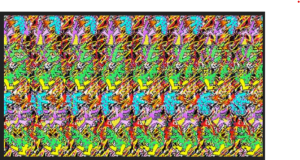
Information Theory (Bertlafany, the Father of Information Theory)
Information theory is the process of gaining, analyzing, and interpreting information—the factor of most importance is finding meaning between the lines or in the lines themselves. When reading a book, there is usually a “thread” of information behind the words. The meaning behind the words is based purely on perception, and perception is the key to understanding what information is alarming, non-consequential, or novel. Learning from human organisms and interpreting their biofield biosensory nature gives parallel responses and solid insight into the client’s liminal and subliminal stressor responses.
How are Stress and the Amygdala Related?
The National Institute of Health (NIH) confirms that new and novel science is emerging from neurology. The concept that the nature of the impact of stress on the amygdala can trigger the brain/immune/biology into action is now proven. They call it neurobiological interaction. (See Amygdala Activity, Fear, and Anxiety: Modulation by Stress)
The amygdala senses threats—a pattern-matching system designed to protect and defend against dangers. It alerts the flight-or-fight mechanism, calling it into action once triggered due to heightened stress levels. Studies suggest that acute and chronic stressors are strongly associated with neuronal activity within the amygdala (Correll, Rosenkranz, & Grace, 2005). Similarly, synaptic plasticity (the ability for synapses to strengthen or weaken over time) within the amygdala is implied to be affected by exposure to stress (Vouimba, Yaniv, Diamond, & Richter-Lerin, 2004).
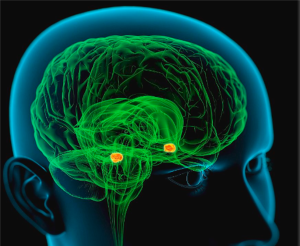
Novel Research: Heart Brain Dynamics of Stress
Dr. Tawakol has researched how neural pathways related to stress and depression result in cardiovascular diseases. Many studies have shown that stress, anxiety and depression are associated with heightened amygdala activity relative to regulatory activity in the cortex. (National Institute of Health).
Prolonged Stress plus Biological Resistance has been called STASIS by Chinese medical doctors. Chinese medicine is a discipline founded upon thousands of years of study of the body’s many energetic relationships. In Traditional Chinese Medicine (TCM), stasis is known to cause many diseases. Its fundamental premise is that an adequate flow of energy (Qi) must be steady and balanced throughout the body to maintain health.
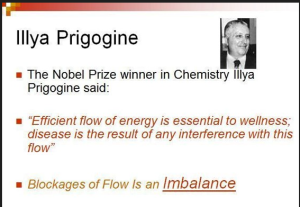
Any imbalance of the energy flow, either excessive or diminished, according to TCM, can eventually lead to illness. This ideology is validated and expressed additionally by more recent physics and chemistry studies. See research on stasis, illness, and orgone energy by Dr Wilhelm Reich, MD (The Cancer Biopathy—available on Amazon). Reich’s research linking cancer to stasis is complemented, regarding energetics, by research on Dissipative Structures and Synergetics by Illya Prigogine, Ph.D., and Nobel Laureate.
Based Upon Advanced Biofeedback Science:
EDA (electrodermal activity) or GSR (bioimpedance) is accomplished by evoking a small voltage potential across the skin from point A to point B. The line and distance can be related to local tissues (scanning) or “inner” meridians of acupoint readings. The characteristics of that potential charge and reaction pertain directly to the skin’s responses. Perceptive responses mirror the ‘true physiology’ of the human organism. The SpectraVision® technology takes note of biosensory data voltages, aspects of voltage, amperage, and conductance, as well as changes of reciprocity and resistance to micro-changes, all of which have been calibrated to an accuracy of 0.0006.
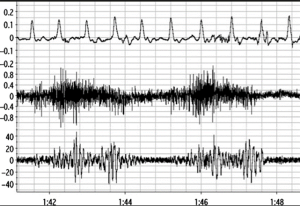
Specific dampeners are present to avoid false positives and over/under readings, which might be subject to localized effects of the environment or wall outlet power. The SpectraVision® is battery operated and has a medical grade power converter; it has been thoroughly tested to provide a standard rate of micro-electricity to the skin (based on Dr Voll’s research) at 1.5 volts with a 50% reading for 100 Ohm deflection demonstrating balance. Bleed is accounted for through complex circuitry within the unit. However, the SpectraVision® increases the resistance based on geodynamic changes in each person’s body as the electron flow is forced to follow a secondary pathway; by supporting the nature of resistance and conduction through changes in the biological states during healing and inflammation, new insights are obtained as related to speed, duration, levels of responsiveness and resistance.
What does Spectral Data look like?
This is how spectral data looks on a computer screen.
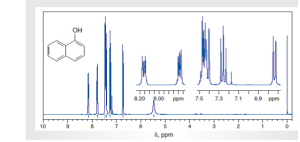
What is an array?
An array can be described as “a grid of numerical values with information” concerning raw data, how to locate and interpret an element, and how to index it accordingly. Using molecular weight to frequency, 3D can be converted mathematically into 2D and then back to 3D, and it can also be displayed as a frequency.
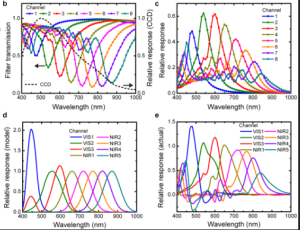
What are “dots”?
Dots are aspects of both content and location—they are essentially an addressing system. Functioning similarly to a constellation of the stars, each dot correlates with those related to it, forming both the location and the “nature” of the constellation within a matrix, just like your home address has a home number, street name, city, and zip. People use the stars as reminders of the stories in the heavens—the stars’ “shape,” the constellation's name, and the story behind it. In digital systems, the dots, which are the locations in computing, also build a type of digital image.

What is a tensor field?
A tensor field is a complex algorithm that mathematically converts dots/data sets into real-space aspects of their original mirroring (calculation) of the 2D information back into 3D. In biocomputing, it can work with arrays and grid values, making vector assignments, including location and actions, and creating virtual data arrays. Tensor fields are mathematical stress calculations. This is very similar to aspects of a constellation and the formation of stars carrying specific information, both of name and location. The tensor field converts the capacity for molecular-to-frequency dynamics back to 3D and can be used to calculate stress.
Bionetic Software has been programmed with thousands of algorithms and nearly 750,000 lines of code. Every “data result” after the stress survey is created by changes in psychophysiology, and there is no random or Hermitian grid allocation.
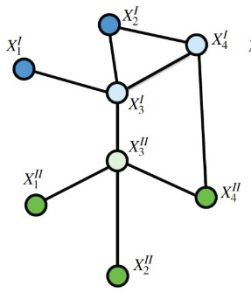
What is an asymmetric algorithm for a tensor field?
It can convert 2D information into 3D information.
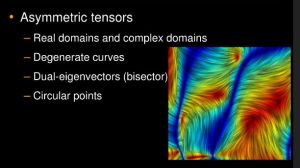
Thermodynamic properties of the human body:
The body is an energy-rich environment. One way to help understand the many “things” going on is to simply look at its temperature readings. They vary in many places of the body and are somewhat isolated. The image shows hot and cold spots.
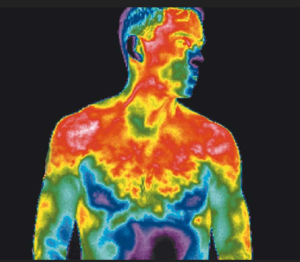
What does a probability wave function look like when it’s graphed?
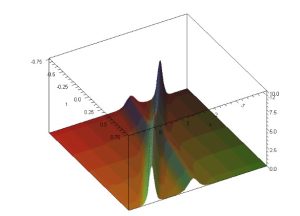
Limits in Bioresonance:
Bioresonance offers a simple hierarchical list, so you can’t sort the data beyond greater or lesser responses. It is a one to one correspondence.
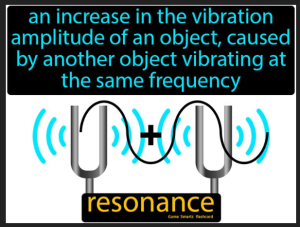
Bionetic Information—Beyond Resonance
How does the data become meaningful? What would the Report Data look like if I wanted to know "body organ or system” stress levels?
Complex data is converted in an easy-to-read 1–10-level format. The higher the number, the more “stress” is experienced; the lower the number, the less response or resistance.
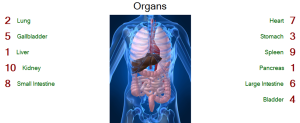
Will I have to analyze the graphs?
No, the internal computational system will prioritize the waves for you, placing them in a GRID FORMAT.
What does the Bionetic Data Set Look like in the clinic's grid view?

Only Bionetics offers a way to learn how to look for adaptive responses, allergic triggers, toxicity, and immune-related stress responses—utilizing MPR, RISE, FALL, DURATION, SLOPE, and DELTA.
You will be taught how to achieve this in the Bionetics program. Each client will have a personalized plan that you can discuss with them regarding potential strategies and choices that will support their lifestyle and healthy habits.
Terminology
ABE: Adverse Babyhood Events—this is summarized as neglect, harm, lack of nutrition, and poor living conditions or abuse from birth to two years old.
ACE: Adverse Childhood Events—summarized as neglect, harm, lack of nutrition, and poor living conditions or abuse (physical, mental, and emotional) from two years of age until eighteen. To receive one or more, which also includes seeing a parent with a gun, being threatened, or having a caregiver go to jail, etc, each event is given a count of one. To receive four or more often indicates aberrant behavior such as self-harm, smoking, high-risk sexual behavior, and drug use in teenagers. By the time the person is forty years old with a count of four or more, situations for self-harm and autoimmune illnesses are created in nearly half of those who experience such events.
CDR: Cell Danger Response
GHK: Germanic Healing Knowledge
References
- Correll, C. M., Rosenkranz, J. A., & Grace, A. A. (2005). Chronic cold stress alters prefrontal cortical modulation of amygdala neuronal activity in rats. Biological Psychiatry, 58(5), 382-391.
- Vouimba, R. M., Yaniv, D., Diamond, D., & Richter‐Levin, G. (2004). Effects of inescapable stress on LTP in the amygdala versus the dentate gyrus of freely behaving rats. European Journal of Neuroscience, 19(7), 1887-1894.
Bibliography
- Binswanger, L. "XII". In Jung, Carl (ed.). Studies in Word-Association. Moffat, Yard & company, New York, 1919. pp. 446 et seq. Retrieved 30 March 2015.
- Boucsein, Wolfram. Electrodermal Activity. Springer Science & Business Media, 2012.
- Brown, Barbara. "Skin Talks—And It May Not Be Saying What You Want To." Idaho State Journal, Field Enterprises, Inc., 9 November 1977, p. 32. Retrieved 8 April 2015.
- Cacioppo, John T.; Tassinary, Louis G.; Berntson, Gary G. Handbook of psychophysiology (3rd ed.). Cambridge University Press, 2007.
- Carlson, Neil. Physiology of Behavior. Pearson Education, Inc., New York City, 2013.
- Critchley, Hugo D. "Book Review: Electrodermal Responses: What Happens in the Brain". The Neuroscientist. 8 (2), April 2002, pp. 132–142. doi:10.1177/107385840200800209. Electrodermal activity (EDA) is now the preferred term for changes in electrical conductance of the skin, including phasic changes that have been referred to as galvanic skin responses (GSR).
- Daniels, Victor. "Notes on Carl Gustav Jung". Sonoma State University. Retrieved 4 April 2015. By 1906 [Jung] was using GSR and breath measurement to note changes in respiration and skin resistance to emotionally charged worlds. Found that indicators cluster around stimulus words which indicate the nature of the subject's complexes… Much later L. Ron Hubbard used this approach in Scientology's "auditing," using the "e-meter" (a galvanic skin response indicator) to discern the presence of complexes.
- Handbook of Clinical and Experimental Neuropsychology. Edited by Denes, Gianfranco and Pizzamiglio, Luigi. Psychology Press, 1999, p. 33.
- Martini, Frederic; Bartholomew, Edwin. Essentials of Anatomy & Physiology. San Francisco, California, 2001. Benjamin Cummings. p. 263.
- Mendes, Wendy Berry. "Assessing Autonomic Nervous System Activity" (PDF). In Harmon-Jones, E.; Beer, J. Methods in Social Neuroscience. Guilford Press, 2009. Retrieved October 20, 2015.
- Mitchell, Gregory. "Carl Jung & Jungian Analytical Psychology." Mind Development Courses. Retrieved 9 April 2015.
- Oshumi, T., Ohira, H. "The positive side of psychopathy: Emotional detachment in psychopathy and rational decision-making in the ultimatum game." Personality and Individual Differences 49, 2010, pp. 451-456.
- Reich, W. "Experimentelle Ergebnisse ueber die electrische Funktion von Sexualitat und Angst" (Sexpolverlag, Copenhagen, 1937). Translated as "Experimental investigation of the electrical function of sexuality and anxiety" in Journal of Orgonomy, vol. 3, no. 1-2, 1969.
- Shepherd, Peter. “The Biofeedback Monitor.” Trans4Mind, web.archive.org/web/20080915112040/http://www.trans4mind.com/transformation/gsr.htm. Accessed 15 September 2008.
- Society for Neuroscience. SfN 2010 - Nano, Theme H, Featured Lectures, Special Lectures, Symposia/Minisymposia, Workshops, Satellites, and Socials. Coe-Truman Technologies, 2011. Retrieved 28 February 2017.
- Society for Psychophysiological Research Ad Hoc Committee on Electrodermal Measures. "Publication recommendations for electrodermal measurements: Publication standards for EDA". Psychophysiology. 49 (8): 1017–1034. August 2012. doi:10.1111/j.1469-8986.2012.01384.x.
- "You can learn control of how your skin talks." The San Bernardino County Sun. October 11, 1977. p. 12. Retrieved 8 April 2015. Current research using the skin's electrical activity as a communications medium between patient and therapist looks promising in such stress problems as drug abuse, alcoholism, neuroses and other tension states.